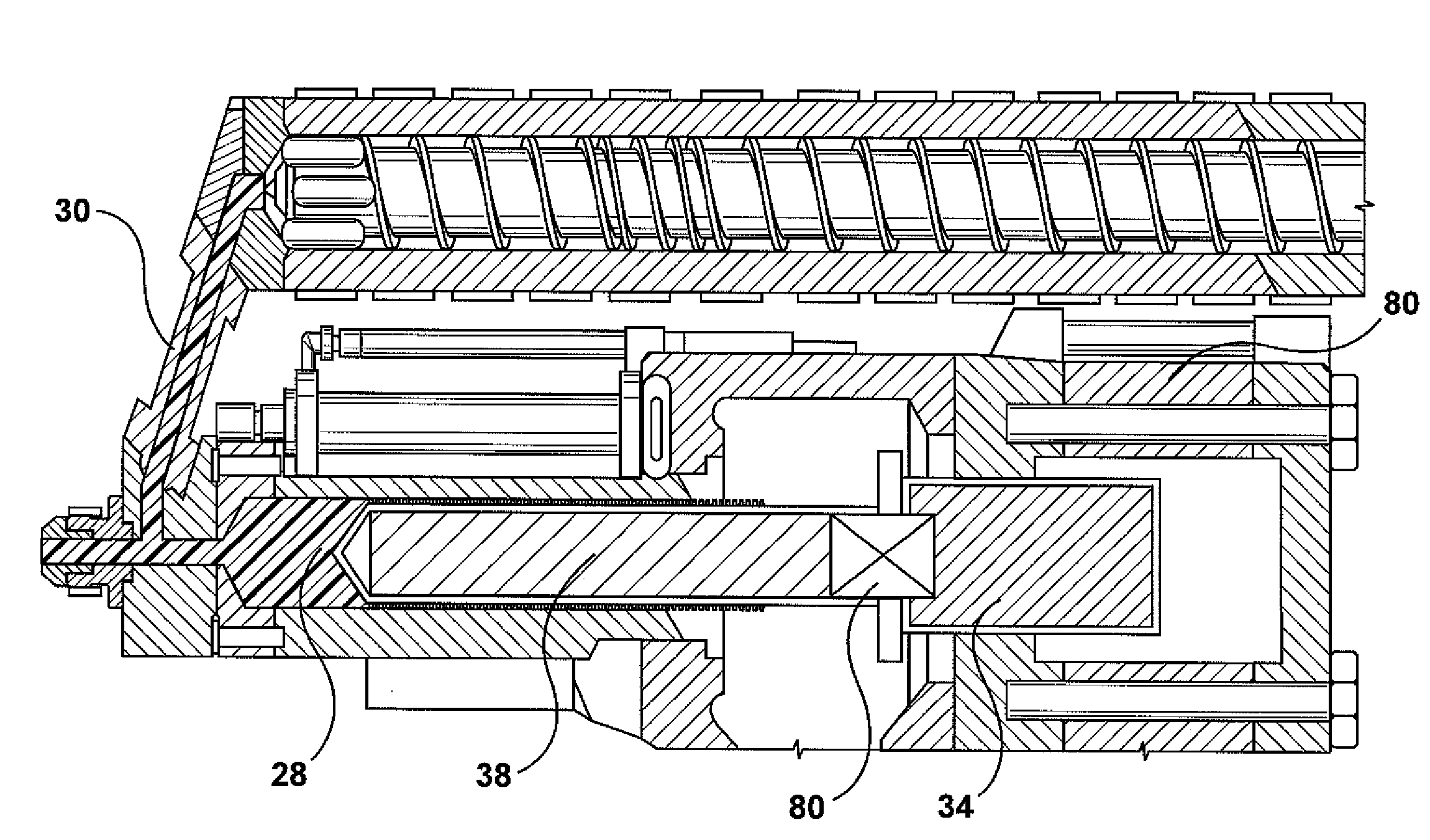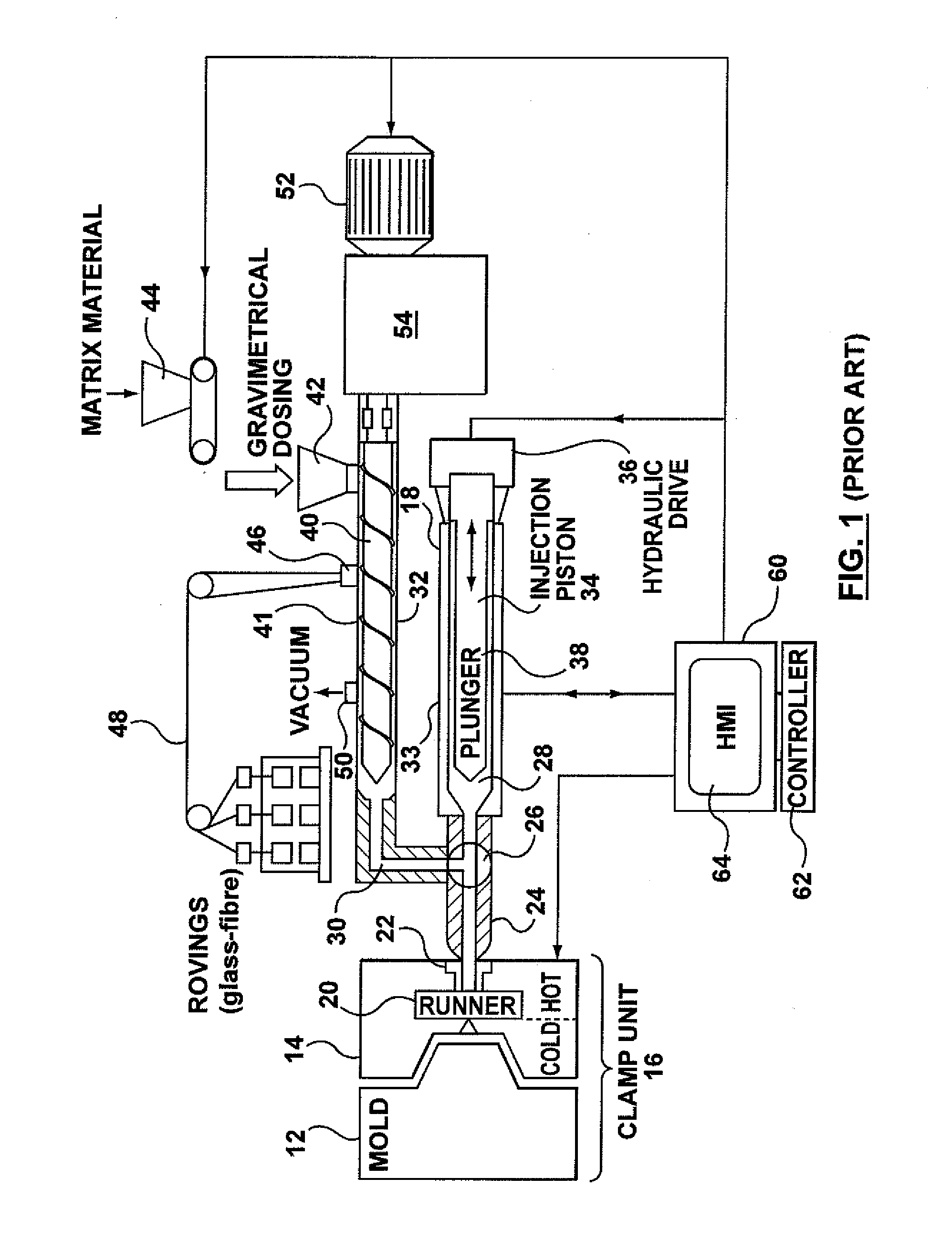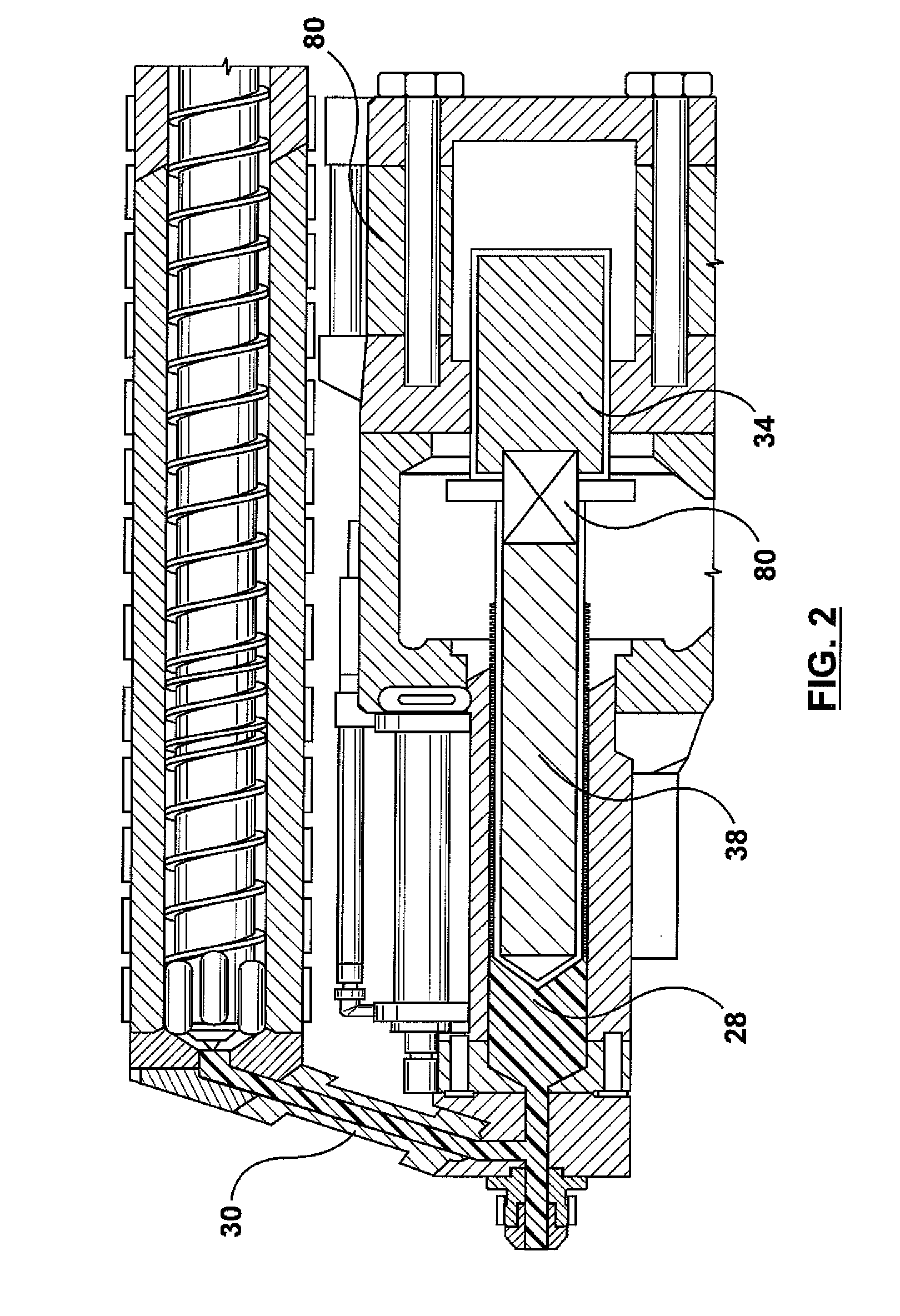Apparatus and Methods for Active Mold Decompression & Melt Accumulation in a Shooting Pot Reservoir of an Injection Molding Machine
- Summary
- Abstract
- Description
- Claims
- Application Information
AI Technical Summary
Benefits of technology
Problems solved by technology
Method used
Image
Examples
Embodiment Construction
[0038]FIG. 1 shows a typical injection molding machine 10 (although in this case an in-line compounding machine) that can be adapted to support an active decompression function according to the various embodiments of the present invention. Although represented as a two-platen system, the machine could equally be a three platen machine (for example).
[0039]Like conventional machines, during each injection cycle, the molding machine 10 produces a number of plastic parts corresponding to a mold cavity or cavities defined by complementary mold halves 12, 14 located within the machine 10.
[0040]The injection-molding machine 10 includes, without specific limitation, a clamp unit 16 as well as an injection unit 18 for plasticizing and injecting material. In operation, the movable platen is moved relative to the fixed platen by means of stroke cylinders or the like. Clamp force is developed in the machine, as will readily be appreciated, through the use of tie bars and a tie-bar clamping mech...
PUM
| Property | Measurement | Unit |
|---|---|---|
| Time | aaaaa | aaaaa |
| Pressure | aaaaa | aaaaa |
| Size | aaaaa | aaaaa |
Abstract
Description
Claims
Application Information
 Login to View More
Login to View More - R&D
- Intellectual Property
- Life Sciences
- Materials
- Tech Scout
- Unparalleled Data Quality
- Higher Quality Content
- 60% Fewer Hallucinations
Browse by: Latest US Patents, China's latest patents, Technical Efficacy Thesaurus, Application Domain, Technology Topic, Popular Technical Reports.
© 2025 PatSnap. All rights reserved.Legal|Privacy policy|Modern Slavery Act Transparency Statement|Sitemap|About US| Contact US: help@patsnap.com



